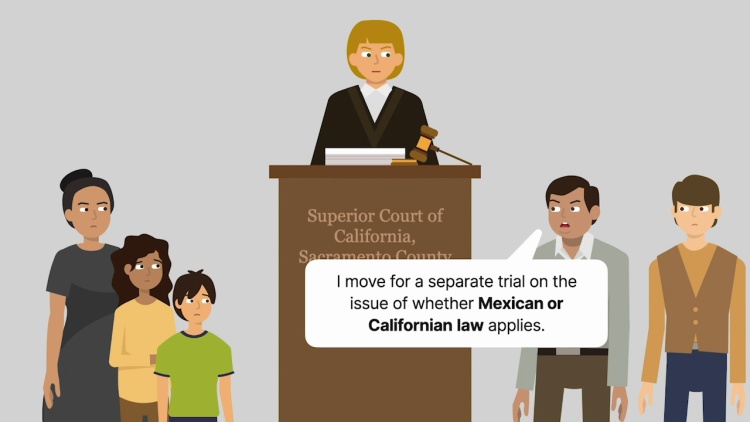Hurtado v. Superior Court
California Supreme Court
522 P.2d 666 (1974)
- Written by Craig Conway, LLM
Facts
Antonio Hurtado was a passenger in a vehicle driven by his cousin, Manuel Cid Hurtado (defendant). Manuel’s car collided with a truck parked on the side of the road. The truck was owned by Jack Rexius (defendant). Antonio, who was a resident of Mexico but temporarily in California, was killed in the crash. Antonio’s wife and surviving children (plaintiffs), filed a wrongful death suit against Manuel and Rexius in California state court. Antonio’s wife and children were residents of Mexico. Manuel and Rexius were residents of California. Manuel moved for a separate trial on the issue of whether Mexican or Californian law governed recoverable damages. Manuel argued for the application of a Mexican law that limited the damages recoverable in a wrongful death action. California law did not have a maximum damages amount. The trial court granted Hurtado’s motion and took judicial notice of the Mexican statute but ultimately held that California damages law applied. Manuel filed a writ of mandate with the California Court of Appeal asking the appellate court to direct the trial court to vacate the ruling and apply Mexican damages law. The appellate court granted the writ and directed the trial court to apply Mexican law. Antonio’s wife and children petitioned the California Supreme Court for review, and the court granted certiorari.
Rule of Law
Issue
Holding and Reasoning (Sullivan, J.)
What to do next…
Here's why 899,000 law students have relied on our case briefs:
- Written by law professors and practitioners, not other law students. 47,000 briefs, keyed to 994 casebooks. Top-notch customer support.
- The right amount of information, includes the facts, issues, rule of law, holding and reasoning, and any concurrences and dissents.
- Access in your classes, works on your mobile and tablet. Massive library of related video lessons and high quality multiple-choice questions.
- Easy to use, uniform format for every case brief. Written in plain English, not in legalese. Our briefs summarize and simplify; they don’t just repeat the court’s language.





